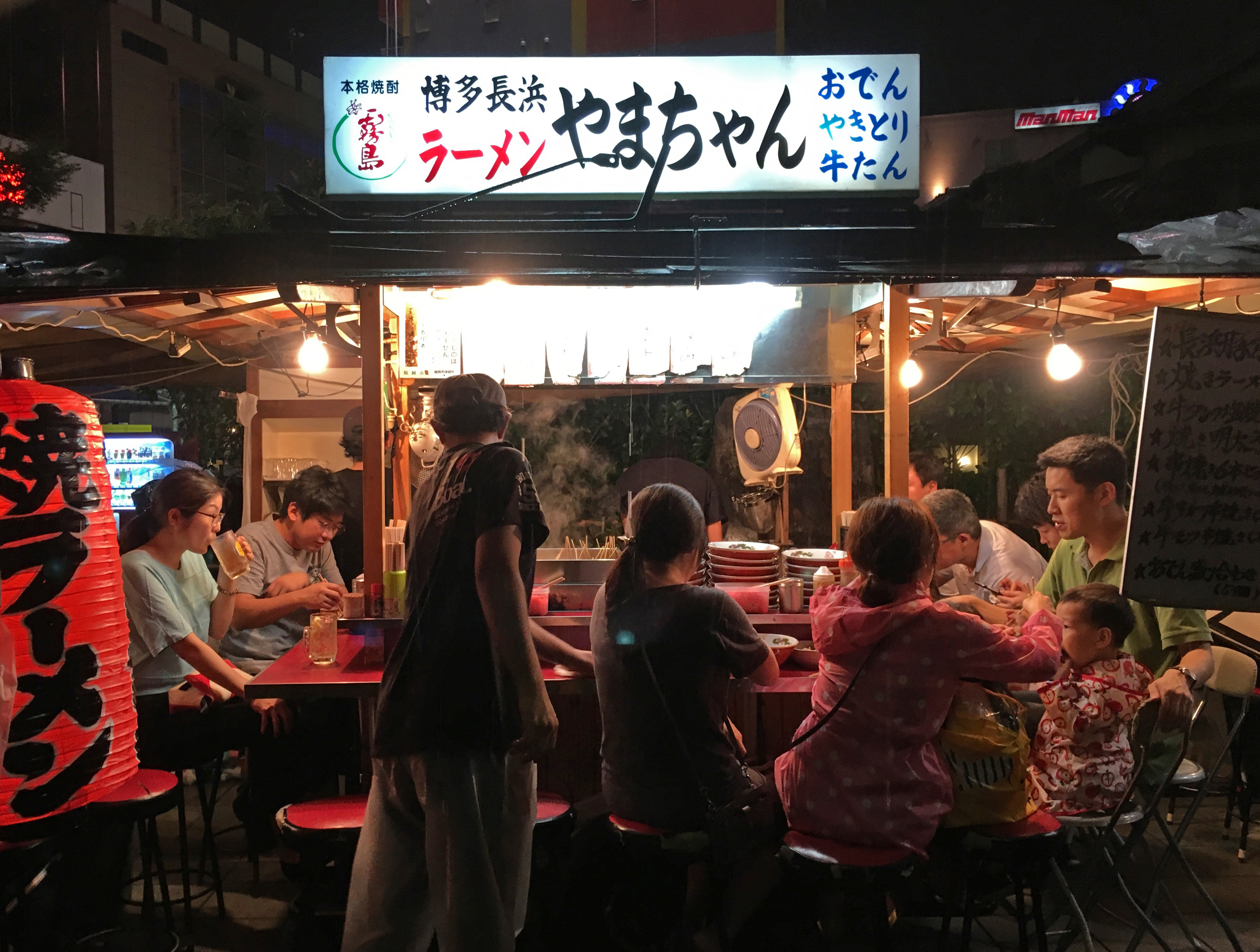Fukuoka was named the world's seventh most-livable city by Monocle magazine this year for its eco- and business friendly initiatives — but its status as a ramen mecca couldn't have hurt. Within Japan, Fukuoka is known, perhaps more than anything else, for tonkotsu (pork bone) ramen, thanks in part to local ramen giants Ippudo and Ichiran. Both of these mega-chains make Hakata-style ramen: tonkotsu broth cooked at a rolling boil and served with thin, sturdy noodles. Thanks largely to the success of Ippudo and Ichiran, this basic style — named for the Hakata neighborhood where it was born — has become synonymous with tonkotsu ramen itself. Hakata ramen may loom large in Fukuoka, but other local styles still shine in its shadow.
While the smell of pork-bone broth being made is not exactly mouthwatering, it contains a promise of lip-smacking results. A short walk from Hakata Station, the acrid stench of boiling bones can be detected long before Hakata Issou is in sight. Open since 2012, Hakata Issou (www.hakata-issou.com) has made its mark on Fukuoka with what it dubs "Neo-Hakata" ramen. The rich and slightly sour broth is handmade, resulting in a delicate froth that fans call "tonkotsu cappuccino." Each bowl is topped with locally sourced roast pork, scallions, nori and wood ear mushrooms.
The ramen world is full of apocryphal tales. The story of another local style, Nagahama, dates to 1953 when a fish factory relocated to Fukuoka's Nagahama district. Its workers wanted a quick meal with no fuss, and so an enterprising ramen chef obliged by cutting ultra-thin noodles that could cook in an instant. Die-hard Nagahama ramen fans order their noodles kona-otoshi: dipped in boiling water only long enough to remove the excess flour before being dropped into a bowl of steaming tonkotsu broth.


















With your current subscription plan you can comment on stories. However, before writing your first comment, please create a display name in the Profile section of your subscriber account page.